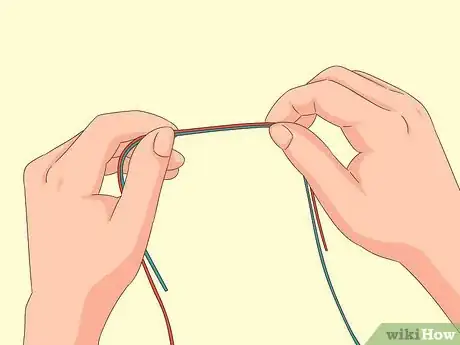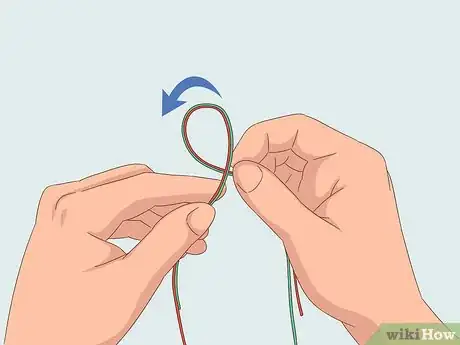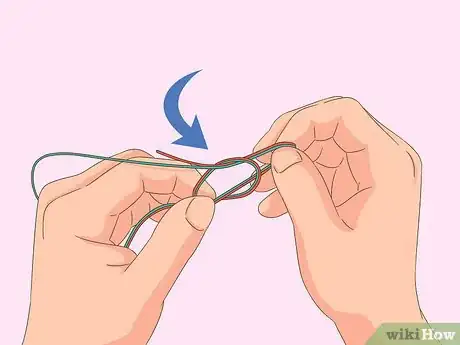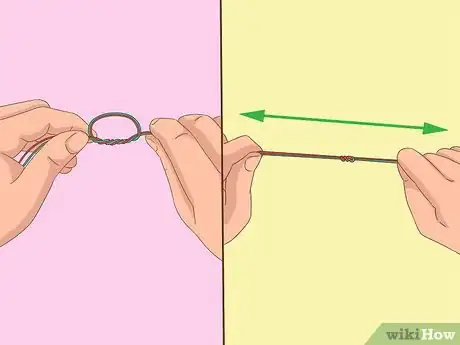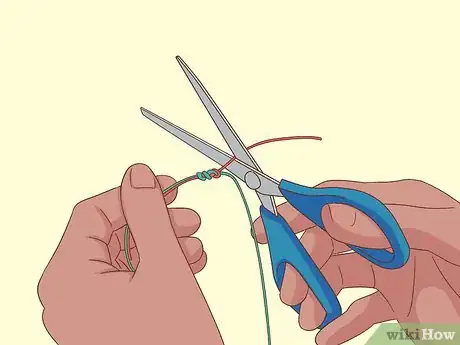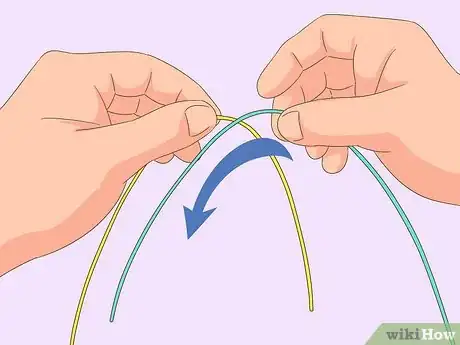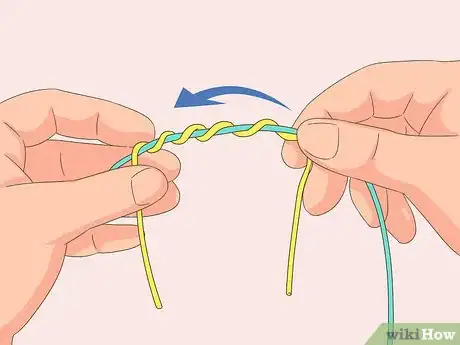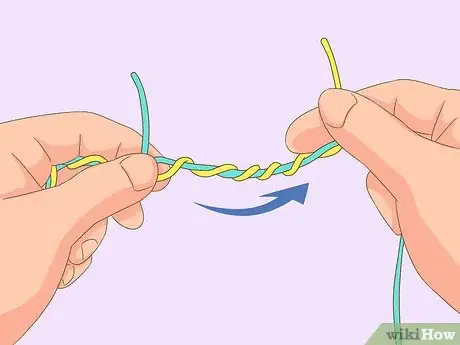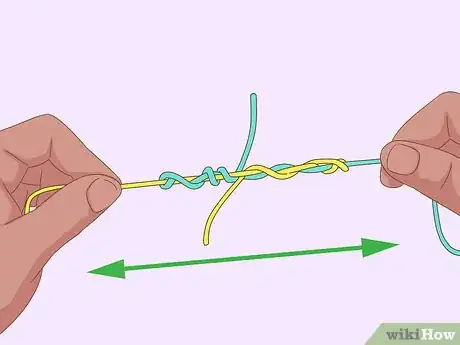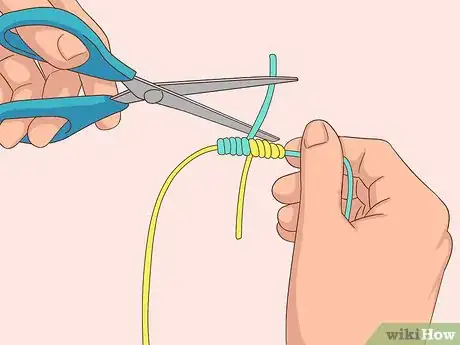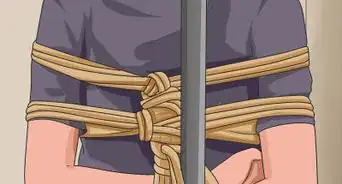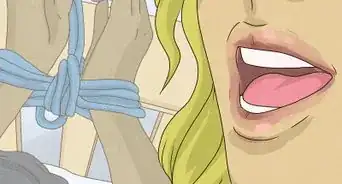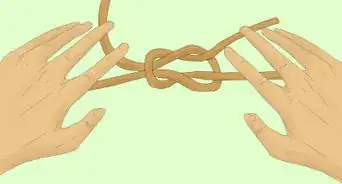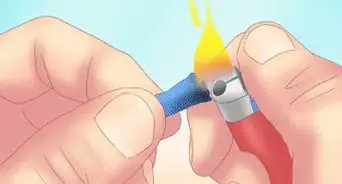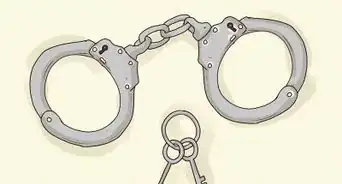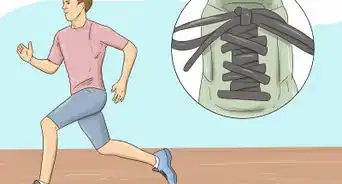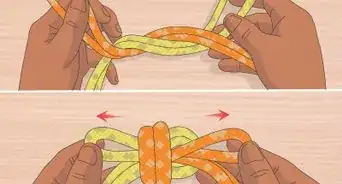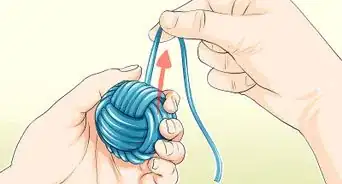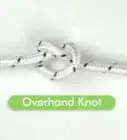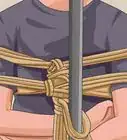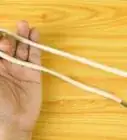This article was co-authored by wikiHow Staff. Our trained team of editors and researchers validate articles for accuracy and comprehensiveness. wikiHow's Content Management Team carefully monitors the work from our editorial staff to ensure that each article is backed by trusted research and meets our high quality standards.
This article has been viewed 53,704 times.
Learn more...
Knowing how to properly tie together different lines is one of the most important parts of fly fishing. When it comes to tying together the tippet and leader lines, which are two lines of a similar diameter, there are two main knots that are commonly used. With a little practice, you’ll be able to use either the double surgeon’s knot or the blood knot to tie your leader and tippet together.
Steps
Tying a Double Surgeon’s Knot
-
1Place the leader and tippet side by side so that they overlap by 6 in (15 cm). Position the lines with the tag ends facing in opposite directions. Hold the leader line and the tag end of the tippet together by pinching them between your thumb and forefinger on your non-dominant hand where they meet.
- Tag end refers to the end of the line that you are using to tie the knot.
-
2Create a loop with the 2 lines together. Use your dominant hand to create an overhand knot with the tag end of the leader, and pass the leader and tippet tag ends through the loop once. Do not tighten the knot all the way. It should be an open loop.
- At this point the loop will look like a loose pretzel.
Advertisement -
3Pass the leader and the tippet through the loop another time. Hold the loop in your non-dominant hand. Twist the leader and tippet tag ends around the loop and pass them through again. Do not fully tighten the knot yet.
- The loop will now look like it has a small braid on the top side.
-
4Moisten the loop and pull on the leader and tippet lines to tighten the knot. Use saliva to moisten the loop. Pull the leader line and tippet tag end with your left hand, and the tippet line and leader tag end with your right hand simultaneously until the knot is fully closed.
- Lip balm also makes a good moistener for the line if you don’t want to use saliva.
- Pull each side slowly to tighten the knot evenly.[1]
-
5Clip the tag ends so that they are close to the knot. Use nail clippers, scissors, or pliers to clip the tag ends of the leader and tippet to finish the knot. Try to get them as short and close to the knot as possible so that there are no loose ends.
- Once you learn this knot it is very strong and fast to tie![2]
Using a Blood Knot
-
1Overlap the ends of the leader and tippet lines by 6 in (15 cm). Hold them together in your non-dominant hand by pinching where they overlap. Keep your dominant hand free to tie the lines together.[3]
- Tag end means the end of the line where you are tying the knot.
- The blood knot can be used to tie any two lines of the same diameter together.
-
2Twist the tag end of the tippet around the leader line 5 times. Use your dominant hand to wrap one line in a coil, like a spring, around the other line. Then pull the tag end back and through the middle where the two lines meet.[4]
- You can wrap one line around the other up to 7 times for a stronger variation of this knot.
-
3Wrap the tag end of the leader around the tippet line 5 times. Repeat the coiling process for the other side. Pull the leader tag end back through the middle where the lines meet in the middle so that it is facing in the opposite direction of the tippet tag end.[5]
- The knot will now look like it has two spring coils, one on either side. The tag ends will be facing opposite directions, one going out through the middle to the top and one to the bottom.[6]
-
4Pull the lines slowly in opposite directions to tighten the knot. Take one line in each hand and pull them to close the knot. As you do this the twists will gather together and tighten.[7]
-
5Clip the ends of the lines to finish the knot. Trim the tag ends so they are not long and loose. You now have a tight and strong knot holding the tippet and leader lines together![8]
- The blood knot is not quite as strong as the double surgeon’s knot, but it creates a straighter connection between the two lines, which can help when casting your line.
References
- ↑ https://guiderecommended.com/5-knots-you-must-learn-for-fly-fishing/
- ↑ https://guiderecommended.com/5-knots-you-must-learn-for-fly-fishing/
- ↑ https://www.netknots.com/fishing_knots/blood-knot
- ↑ https://www.netknots.com/fishing_knots/blood-knot
- ↑ https://www.netknots.com/fishing_knots/blood-knot
- ↑ https://www.animatedknots.com/bloodknot/index.php
- ↑ https://www.animatedknots.com/bloodknot/index.php
- ↑ https://www.netknots.com/fishing_knots/blood-knot
